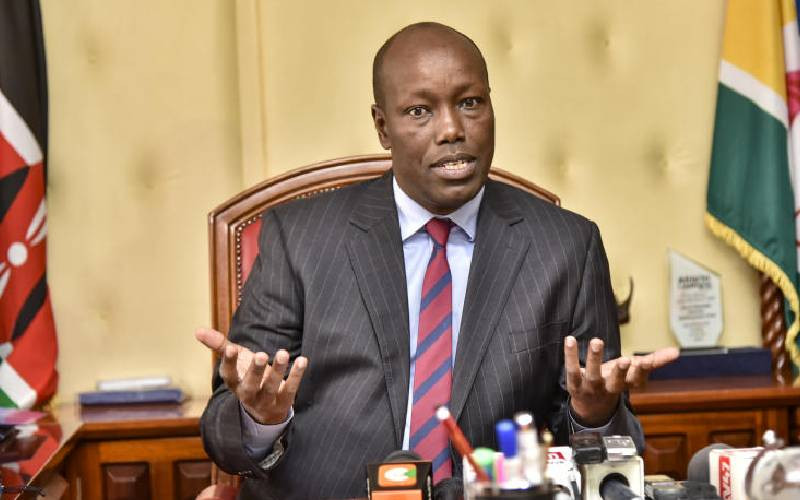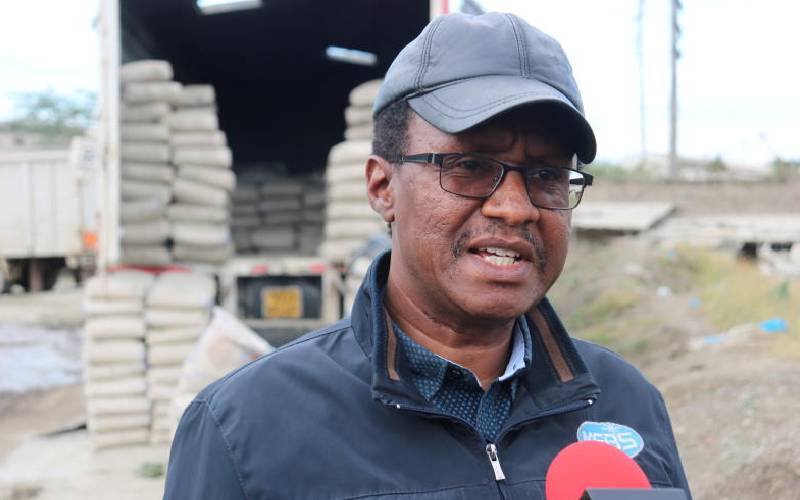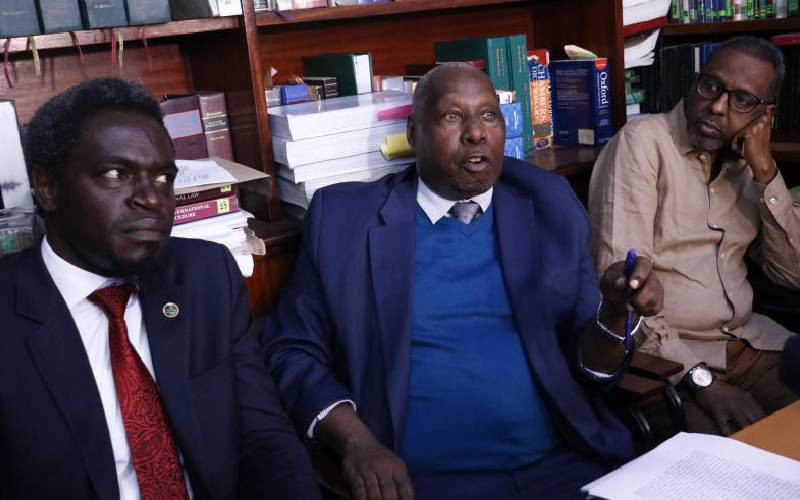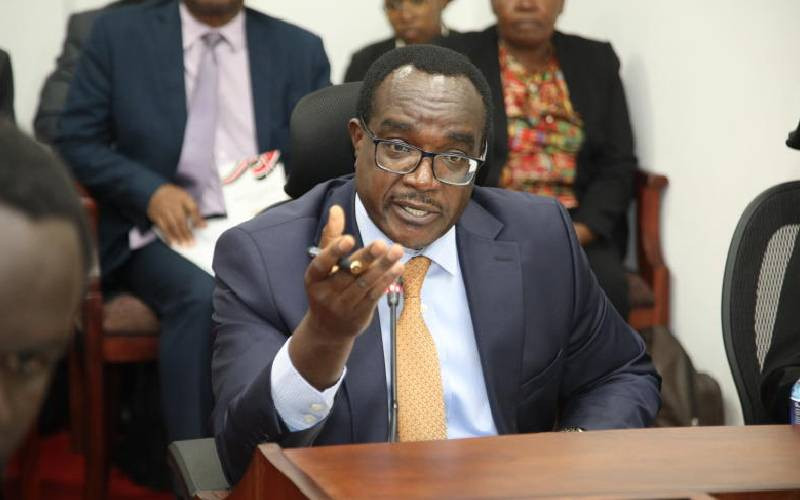
Sometime in 2006, Metal Refineries EPZ Limited set up base at Uhuru Owino, Mikindani area, Mombasa County.
The firm's sole purpose was to recycle lead acid batteries by smelting them and extracting lead components.
After Metal Refineries closed shop in 2014, an ineffable story of pollution became the centre of the now long-running battle between the residents on one side and the government, National Environment Management Authority (Nema), and Metal Refineries, on the other.
Others in the case are Environment, Water and Natural Resources and Ministry of Health Cabinet Secretaries, County Government of Mombasa, Penguin Paper and Book Company, and Export Processing Zone Authority.
Eight years later
Documents obtained by The Standard show that eight years after the residents sought court interventions for cleanup and compensation, there is no solution yet.
The residents, through their lawyers Olel, Onyango, Ingutiah, and Company Advocates have now escalated the battle that started on August 20, 2015, to the Supreme Court.
Uhuru Owino residents won the case before the Environment and Lands Court. At least 4,000 residents were to get Sh1.3 billion in compensation following the orders by Justice Ann Omollo.
In their case at the High Court, the residents led by Scholastica Khalayi were seeking Sh1.6 billion compensation saying 'their lives and health have been ruined or affected adversely and they need money for frequent medication.'
The judge ordered a cleanup of the harmful lead that killed and maimed Uhuru Owino dwellers within 120 days.
The judge also entrusted the Centre for Justice Governance and Environmental Action with the cleanup of the 13.5 acres if Nema defaulted, at a cost of Sh700 million, which was to be shouldered by taxpayers.
The orders were perhaps a major reprieve for the slum dwellers and a closure for those who lost 20 family members to lead poisoning.
Health complications
At the same time, the money given by the court would have helped thousands who are battling health complications from lead poisoning to seek treatment, while the environment healed from the battering after the cleanup.
In her judgment, Justice Omollo ordered Nema to shoulder the heaviest burden by paying 40 per cent, translating to Sh520 million of the compensation. Environment and Health ministries were to shoulder 10 per cent each, Mombasa County government 10 per cent, and EPZA 25 per cent.
However, the victory was short-lived after Nema appealed.
Justices Martha Koome (Chief Justice), Daniel Musinga (Court of Appeal President), and Asike Makhandia were the first bench to dash the hopes of Uhuru Owino residents. This was however on a temporary basis.
The three judges found that the residents did not prove their ability to refund the money.
"On the nugatory aspect, if execution is undertaken and the intended appeal succeeds, we think it will be impossible to recover the huge judgment sum that may have been paid to the petitioners. None of them swore an affidavit to state that they are capable of refunding any part of the judgment sum in the event that it is paid out and the appeal is successful," the then Court of Appeal bench ruled.
They were however silent on what ought to happen to the environment and those who were seeking medical intervention.
After the case proceeded to a full hearing, the cruel hand of fate had something else in store.
Who to blame
The Court of Appeal in Mombasa in its final judgment on June 23 set aside Justice Omollo's orders and gave a differing percentage on who was to blame for the pollution.
Justices Gatembu Kairu, Pauline Nyamweya, and Jessie Lesiit reduced Environment and Health CSs liability from 10 per cent each to five per cent.
At the same time, the trio slashed Nema's liability from 40 percent to 30. EPZA was apportioned 10 percent while the court increased Metal Refinery's portion to 40 per cent while Penguin got 10 per cent.
In the meantime, the judges gave Nema 12 months to pool with other government agencies and the private sector to clean up the land.
Justices Kairu, Nyamweya, and Lesiit directed that Nema should first identify the extent of contamination caused by Meral Refineries.
The agency was also ordered to remove any contamination in the affected area and fully restore Uhuru Owino's ecosystem.
The Court of Appeal also said Nema should report to the ELC at Mombasa every three months on the progress made on the clean-up until the court gave Uhuru Owino's soils and waters a clean bill of health.
No evidence
The trio found that although the lower court had ordered the eventual restoration of the land and habitat restoration, there was no scientific evidence from Uhuru Owino to justify the award.
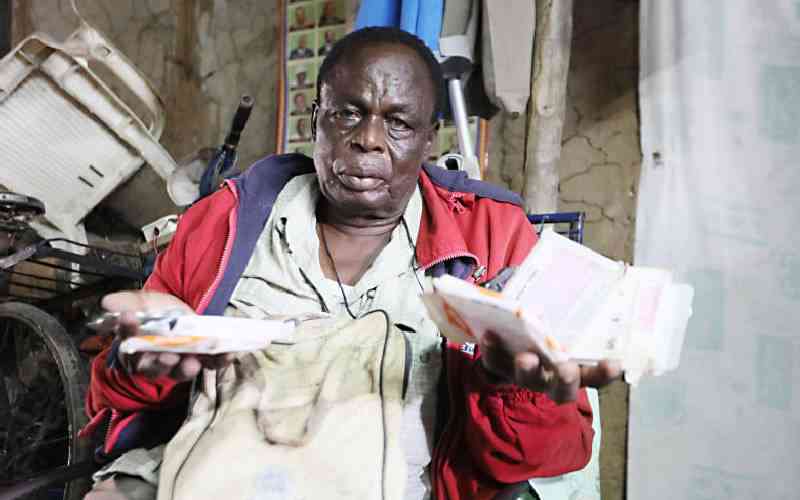
They said the appeal "partially succeeds only to the extent of our findings on the apportionment of liability, award, and quantum of damages and accordingly set aside the following orders granted by Justice Omollo on 16th July 2020," they said.
On the compensation, the Appeal Court judges said the case should be remitted back to the Environment and Lands Court for the identification of persons who were eligible for compensation.
Whether the Court of Appeal was right to order the 4,000 residents or simply at least 580 households to be called to testify, how long it will take for ELRC to hear them all and separate wheat from the chaff, and when will justice for the Uhuru Owino environment and its inhabitants be found is are among the issues now to be resolved by Kenya's highest court.
The residents have filed four grounds of appeal. The crust of their case is that the Court of Appeal erred by ordering a retrial to prove injury to the affected persons.
Unfair
They say it was unfair for the court not to compensate those who had documents to prove their case.
According to Uhuru Owino residents, it will be a herculean task to call all the 4,000 residents to testify and investigate deaths to determine compensation.
They are also aggrieved by the order apportioning Metal Refineries the lion's share of liability. According to them, the government allowed the firm to fold and is no longer in Kenya.
Their lead lawyer Charles Onyango said the orders by the three judges would be an exercise of trying to shake a tree trunk from its bottom.
Contaminated ground
He is of the view that the only task that was required for his clients was to show that the environment was polluted.
Onyango says although Nema acknowledged that the land was polluted, it had never lifted a finger for a clean-up.
"Whatever the case, the residents of Uhuru Owino Settlement continue to live on contaminated ground. This is another way in which the court below has denied the appellants their rights as per Article 42 of the Constitution," says Onyango.
 The Standard Group Plc is a multi-media organization with investments in media platforms spanning newspaper print
operations, television, radio broadcasting, digital and online services. The Standard Group is recognized as a
leading multi-media house in Kenya with a key influence in matters of national and international interest.
The Standard Group Plc is a multi-media organization with investments in media platforms spanning newspaper print
operations, television, radio broadcasting, digital and online services. The Standard Group is recognized as a
leading multi-media house in Kenya with a key influence in matters of national and international interest.

